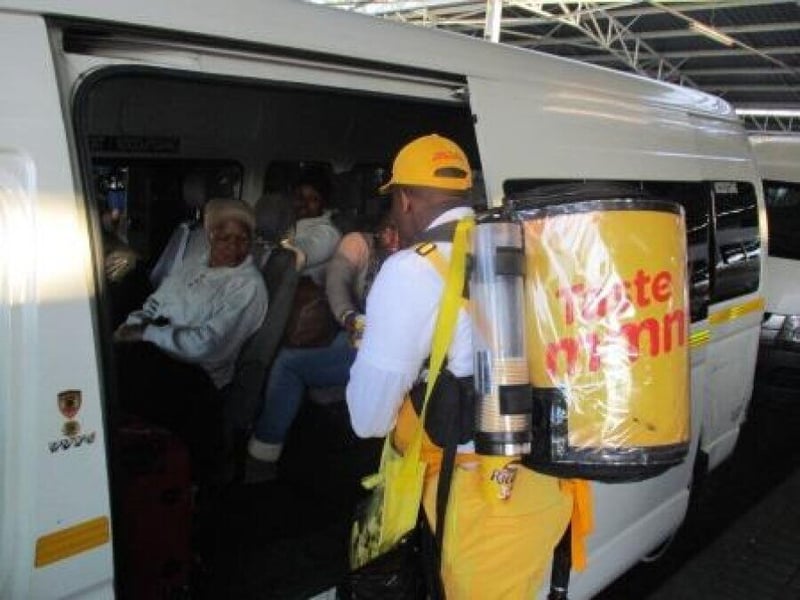Roving main market consumers are driven by experiences
Written by: Grapevine Communications Save to Instapaper
By Miguel Correia, marketing manager of established brand activation, entertainment and event company, the Zinto Marketing Group
South Africa has an extensive public transport system that carries hundreds of thousands of commuters from their residences in ‘eKasi’ (townships) to economic hubs in major cities.
According to the latest statistics published by Arrive Alive, the taxi service industry occupies 65% of the public transport system. A R40-billion a year industry, there are 250 000 minibuses on South Africa’s roads carrying up to 15 million people per day. By comparison, taxi transportation is the most widespread among local commuters relative to the remainder of the sector which is 20% by bus and 15% by rail, which is indicative of the income earning potential of the main market due to high transport costs. After all, the masses spend a large portion of their remuneration on daily transport.
Passengers travel some distance traversing main arterial routes over lengthy periods of time to reach their destinations and regularly they will transfer from one location to the next via several modes of transport.
Because people are investing more time travelling and waiting at taxi ranks, bus stops and train stations, this opens up new communication channels, marketing opportunities and transaction windows for brands. A captive audience, these consumers in transition are constantly are looking for ways to reduce waiting times and eliminate boredom.
Since the main market is driven by experiences and entertainment, these transfer points present an ideal opportunity for experiential marketing to take the stage and to capture the consumers’ direct attention for a longer duration of time than traditional forms of advertising.
This trend offers real value for marketers wanting to reach mass markets and numerous touch points at high traffic intersections simultaneously. Since consumers are more open to being approached in these situations they will embrace a new experience that is engaging whilst waiting for their transport to arrive.
Whether brands are providing product samples, leisure activities or resting places with products/ services that can be consumed/ used while they wait, it allows a wide umbrella of companies to use these areas to communicate messages to a receptive audience and capture the hearts and minds of consumers.
We see an example of this interactive experience in practice on Bree Street in Johannesburg where a well-known coffee brand has placed brand promoters at a bustling node. While waiting in line for their transport to arrive on a cold winter morning, commuters are offered a hot cup of java, handed product samples for trial and consumption as well as promotional leaflets which can be read in-transit.
At the same time, key brand messaging is communicated by way of brand activators through live entertainment platforms. As a result, consumers are given the chance to truly immerse themselves in the brand.
The influence of the senses – sight, sound, scent, taste and touch, on the customer experience is collectively activated in a single interaction and largely impact buyers’ perceptions, judgement and behaviour towards a product or service. This helps consumers to make informed purchasing decisions and is a powerful tool in winning brand loyalty.
Stimuli received from the brand activation environment trigger consumers’ senses and leave a lasting and memorable impression (in this case – respite from the harsh cold), which can break through a plethora of marketing clutter.
These brand encounters also create useful spaces to position a brand positively across the major touch points where consumers can get involved, exchange relevant information and broaden their understanding of the product or service offerings and its benefits.
Experiential marketing activities generate awareness, engage consumers, build brand goodwill, elicit a direct response, and enable potential buyers to absorb content and information in real time.
To further enhance the user journey advertisers can utilise in-transit television commercials or radio inserts to promote the product or service and encourage users to download a brand app or visit digital platforms.
For more information about main market activations visit www.zinto.co.za
Get new press articles by email
Latest from
- Clothes Line for Care
- Inclusive Education, One Pen at a Time
- BIC® turns dreamers into winners
- Zinto spreads a message of hope to young inmates on World Aids Day
- Zinto assists with farewell for Daveyton learners
- Time to smell the roses with GardenShop FloraFarm’s 2016 Rose Show
- BIC educational roadshow continues with its ‘Legacy of Learning’
- Let your garden skills blossom on Garden Day with GardenShop
- New BI Office functionality enables organisations with SAP to unleash powerful insights and deliver business results
- Steyn City School in a league of its own
- Brand activation fosters engagement and inspires consumers to act
- 2016 Clivia Show will captivate with vivid blooms on display at GardenShop FloraFarm
- 2016 Orchid Show at GardenShop FloraFarm promises an enchanting display
- Zinto mentors aspiring marketers at ‘Tuks’
- Zinto restores dignity among differently-abled people for Mandela Day
The Pulse Latest Articles
- Education Is The Frontline Of Inequality, Business Must Show Up (December 11, 2025)
- When The Purple Profile Pictures Fade, The Real Work Begins (December 11, 2025)
- Dear Santa, Please Skip The Socks This Year (December 10, 2025)
- Brandtech+ Has 100 Global Creative Roles For South African Talent (December 9, 2025)
- The Woman Behind Bertie: Michelle’s Journey To Cape Town’s Beloved Mobile Café (December 9, 2025)
